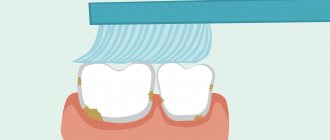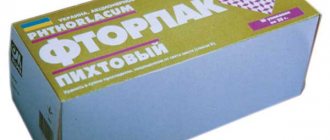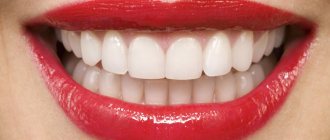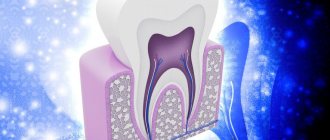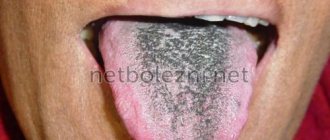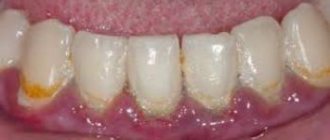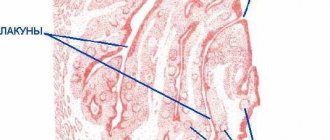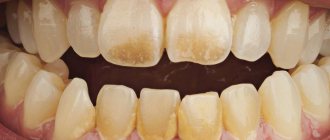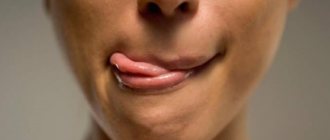The question of how to remove plaque from teeth and between crowns at home remains relevant for everyone who wants to have a snow-white smile and fresh breath. Despite the fact that deposits usually do not cause any discomfort to a person, it is imperative to get rid of the problem. Otherwise, the risk of developing caries, gingivitis and other oral diseases increases.
The patient can resort to professional help or use traditional methods. Which option is optimal in a particular case is best decided together with your doctor. The problem cannot be ignored, since scientists have long proven the existence of a direct dependence of the condition of incisors, canines, and molars on the quality of hygienic care.
What is dental plaque, how does it happen?
Food particles, dead cells, saliva components accumulate on the enamel every day, and bacteria appear. At first, the buildup is soft and easy to clean off. In the absence of regular hygienic care, the layer hardens and turns into stone.
As a rule, several units are affected at once. The surface acquires various unnatural shades (yellow, gray, black, greenish) and becomes rough to the touch. Your mouth begins to smell unpleasant.
The most common occurrence is supragingival deposits. They are located on the visible part of the crown. Subgingival teeth are not visible to the naked eye and go under the gum (sometimes reaching the very tips of the roots). This problem can be localized on the enamel, adjacent to the gingival tissues in the interdental spaces, fissures, and on filling materials.
How is it formed
Before you clean plaque and remove all excess from your teeth at home, you need to understand how it appears and spreads. This process occurs under the influence of the following factors:
- poor oral hygiene;
- a predominant amount of soft food and “fast” carbohydrates in the diet (confectionery, sugar, baked goods);
- lack of saliva.
A healthy person secretes enough secretion to wash away any leftover food. However, if the products are sticky, sugary, viscous, then they are not washed out naturally. Many people neglect to rinse their mouths after lunch or snacks, and as a result, a thin whitish layer appears on the enamel in which microorganisms actively multiply.
In less than a day, there are so many microbes that their metabolic products begin to affect the enamel structure. In the absence of high-quality cleaning, the accumulated mass hardens within 48 hours. The stone can no longer be removed on its own; a person will have to seek professional help from a dentist.
Causes of deposits
Complete and final removal of soft plaque on teeth at home is impossible without establishing the prerequisites that contributed to its occurrence. The most common provoking factors:
- Poor hygiene care. This includes irregular brushing, using a low-quality or inappropriate brush, and not using floss, which effectively cleans the interdental spaces.
- Consumption of “fast” carbohydrates with foods and drinks (for example, sweet soda).
- The diet constantly contains coloring foods (coffee, tea, berries, red wine, sauces).
- Bad habits (smoking, alcohol abuse). At the same time, it is not so important whether a person smokes cigarettes or vape or hookah.
- Bite abnormalities. The pressure on the jaw with such disorders is distributed unevenly, so it is quite difficult to clean the units.
- Various disorders (acute and chronic). For example, pathologies of the salivary glands (less minerals reach the bone tissues), diseases of the gastrointestinal tract, and gastroesophageal reflux disease lead to the appearance of deposits. Due to increased acidity, the number of pathogenic bacteria quickly increases.
When to wean off a pacifier to avoid problems with bite
The habit of putting everything in the mouth can lead to poor articulation of the tongue, lips and jaw when swallowing, as well as an open bite. Studies have shown that a child can be weaned off the habit of sucking a pacifier up to three or four years of age. But since such a habit has biomechanical reasons, it can be difficult to wean a child - in this case, the help of a psychotherapist is necessary.
To avoid problems with bite, it is important to give up the pacifier in time. By 8–9 months, if complementary foods are introduced in a timely manner, the sucking reflex is gradually replaced by a chewing reflex. It is from this age that it is recommended to start giving the baby a pacifier less - it will be psychologically and physiologically easier for him to wean himself off the habit.
Why is dental plaque dangerous?
Soft and hard deposits seem harmless at first glance. They lead to serious problems such as:
- formation of stone on the outer and inner surfaces of the teeth, in the interdental spaces;
- inflammatory processes of mucous membranes, including gums;
- bad breath that does not go away even after rinsing and brushing;
- disruptions in the gastrointestinal tract.
Anything that accumulates on the enamel must be removed in a timely manner. Otherwise, negative consequences cannot be avoided.
Dental removal techniques
These can be both primitive options and high-tech procedures. The choice of intervention method depends on the following factors:
- the patient's well-being;
- clinical picture (thickness, structure and density of the layer);
- age category;
- localization of formations.
It is acceptable to use several types in combination. They will serve as a supplement and speed up getting a positive result.
Ultrasound for removing solid deposits
How to remove plaque from teeth, from interdental spaces and other hard-to-reach places? The ultrasound method comes to the rescue. The waves crush the hardened layer, and then the broken off particles are washed away with water.
This method is suitable for cleaning both internal and external surfaces, areas between crowns. The structure of the incisors, canines and molars does not suffer from this procedure, however, if the patient has increased sensitivity, or there were too many layers, some discomfort may be felt for several days after visiting the dental office.
Laser removal
The laser beam removes the old stone absolutely painlessly by evaporating water into it. The tooth surface remains intact and is not damaged, the condition of the gums improves due to their tone. An additional advantage of the technique is its disinfecting (antibacterial) effect. There is also a drawback that may seem significant to some, but may not matter to others - it is high cost.
Manual removal
A classic option that has been used for decades. Hard deposits are torn off or scraped out with special devices - curette hooks.
This method in itself is traumatic, especially if the hardened layer has penetrated deep into the subgingival space. However, in some cases, this processing option is the only acceptable one due to certain contraindications and restrictions.
The patient may experience pain or other discomfort. To alleviate the condition, the doctor pre-treats the mucous membranes with a gel or anesthetic spray.
Chemical method
How will you clean your teeth from plaque in this case? The procedure can be used independently or in combination with others. More often, dentists choose the second option, and after chemical treatment they use laser, ultrasound or mechanical cleaning.
The essence of this technique is to apply a special gel-like composition with active ingredients (hydrochloric acid, hydrogen peroxide, etc.) to the surface of the enamel. A reaction occurs as a result of which the deposits are softened and washed away with water or removed manually using special tools.
Gentle Air-Flow sandblasting
Air-Flo is a method that is optimal in the presence of soft layers and a thin bacterial film. This way you cannot get rid of the hard stone.
During the procedure, the units are treated with a mixture of water, air, and special abrasives in powder form. The composition is supplied under a certain pressure.
Based on the results of medical manipulations, the overgrown layer is easily removed, without affecting the structure of the incisors, canines and molars, even if they are milk teeth. Patients who have chosen this technique note an undeniable advantage - the shade of the enamel becomes several tones lighter than before.
How to remove plaque at home
The effectiveness of traditional methods depends on the thickness and density of the accumulated layer. If the deposits have appeared recently and are moderately soft, it is enough to clean them in the usual way using a brush.
When yellowish or dark pigmentation appears on the enamel, harder bristles and products with abrasives (Lacalut White, Rembrandt “Anti-tobacco and coffee”, etc.) come to the rescue. However, such compositions should be used only after consulting a dentist and with his approval. By scratching the enamel, you can significantly worsen the condition of your incisors, canines and molars, causing caries and more serious oral diseases.
The patient should simultaneously receive answers to two questions from the doctor:
- how to clean your teeth from plaque at home so that it is quick, painless, but effective;
- what mixtures and solutions to use for safe cleansing without negative consequences.
Many patients use improvised components that have been highly effective for many years. One of the most popular is activated carbon. The tablets are crushed with a spoon or mortar to obtain fine-grained particles that remove deposits and polish the surface. A damp brush is dipped into the resulting powder, after which standard cleaning is performed for several minutes. After using the drug, you should rinse your mouth thoroughly with water. To prevent increased sensitivity, this method cannot be used more than 2-3 times a week.
Baking soda is also often used. The procedure is exactly the same as in the previous case. In the same way, it is indicated to use industrial tooth powder.
Essential oils (lemon, tea tree) are also highly effective. This is the safest home option since there is no exposure to abrasives. There are several ways to use these compounds:
- add 4 drops of oily liquid to a glass of warm water, rinse your mouth after your usual regular brushing;
- drop onto the brush before cleansing without paste.
But do not rush to use advice without recommendations from a dentist.
The appearance of such formations has various reasons and factors.
- Decreased immunity.
- Dental diseases (gingivitis, stomatitis, caries, periodontitis, etc.).
- Infectious diseases.
- Gastrointestinal problems.
- Infection of the body with helminths.
- Pathologies of the heart, lungs, thyroid gland.
- Taking medications, etc.
In difficult cases, when plaque is one of the accompanying symptoms of serious diseases, consult a doctor. The disease must be identified and cured, otherwise no means to improve the microflora will help.
Features of plaque removal in children
Some dental techniques are contraindicated in childhood. This applies to ultrasound, laser, chemical treatment. Such caution is associated with a high risk of damage to tissues sensitive to external influences.
Air-Flow gentle cleaning allowed. It is suitable for children over 6 years old. Manual processing is also acceptable. The dentist must act extremely carefully. Any wrong movement and children's sensitive enamel may be damaged. In addition, almost every child is very active, and injury from dental instruments is possible due to negligence.
It is important for parents to monitor what their son or daughter eats and whether regular hygiene procedures are carried out properly. The diet should contain a minimum of sweets and baked goods; it is better to give preference to fresh seasonal vegetables and fruits.
What kind of pasta should a child under 3 years old have?
If we look at clinical studies that were conducted on the principles of evidence-based medicine, the main component in children's toothpastes is fluoride. Only they confirm their effectiveness in preventing caries.
However, it is widely believed that children under 3 years old should not brush their teeth with fluoride toothpaste. This position is due to the risk of developing fluorosis due to an excess of fluoride in the body - destruction and darkening of the enamel. But an excess of this substance is possible only in areas with a high fluoride content in water, and is also due to genetics.
The fluorine content in water can be checked on the Russian water map. And the genetic predisposition can be determined by the attending physician after passing tests. If the quality of drinking water is normal and tests are normal, dentists usually recommend using a toothpaste with a low concentration of fluoride (up to 500 ppm) at an early age.
In addition to fluorides, it is recommended to look at the abrasiveness of the paste (up to 50 RDA), as well as the presence of therapeutic and preventive additives in the composition: enzymes, xylitol, herbal extracts.
What to look for in the composition when choosing a paste:
- Abrasives - An alternative, non-traumatic but effective abrasive is silica. It is worth giving preference to toothpastes containing this substance.
- Fluorides - Organic fluorine contains compounds such as amino fluoride (olaflur).
- Dairy enzymes - lactoferrin, glucose oxide, lysozyme, lactoperoxidase. All of them stimulate the development of beneficial microflora, strengthen local immunity and restore the acid-base balance of the oral cavity.
- Xylitol is a natural sugar substitute with properties beneficial for teeth and gums. It prevents the growth of bacteria and reduces the risk of caries.
Biorepair Kids toothpaste with strawberry flavor (from 0 to 6 years)
Apadent Kids toothpaste with strawberry and grape flavor (from 0 years old)
Toothpaste Brush-Baby Apple-mint (from 0 to 3 years)
Toothpaste Mamiae Strawberry up to 6 years
How effective are traditional methods?
Some people don’t think about how to remove plaque from their teeth, remove it from their gums, and not harm themselves. In pursuit of a snow-white smile, methods are used, the use of which leads to more serious consequences. For example, many often turn to soda, salt, and activated carbon. All of these are abrasives. Dentists do not advise getting carried away with such cleansing options and carrying out the procedure frequently, since hard particles of different sizes scratch the enamel. As a result, it is gradually destroyed, the pathological process affects deeper layers, and caries occurs.
Traditional recipes show good results if the formations are soft. They cannot cope with stone: only a doctor can remove petrified structures.
Gray, brown or green coating on the tongue
- A gray coating on the tongue often appears with ulcerative lesions of the intestines.
- A brown coating on the tongue appears from frequent smoking.
- A green coating on the tongue appears quite rarely with candidal glossitis, the causes of which may be decreased immunity or indiscriminate use of antibiotics.
Preventing deposits
Instead of thinking about how to get rid of plaque at home when you find it on your teeth, it is better to take care of following preventive recommendations. Preventive action:
- Regular oral hygiene. Systematic cleaning with paste and brush at least 2 times a day, morning and evening, is important.
- Using additional cleansers after meals and snacks throughout the day. These can be threads (floss), an irrigator, a rinse aid, or a special brush.
- Minimizing the consumption of tea, coffee and other coloring drinks and foods.
- Getting rid of bad habits, this especially applies to smoking.
- Introducing hard vegetables and fruits into the diet to naturally cleanse the enamel during chewing.
- Periodic examinations by a dentist (at least once every six months).
- Refusal of confectionery, baked goods, soda.
- Replace the brush every 2-3 months.
Several conclusions can be drawn about how to remove plaque: cleaning at home does not always show high effectiveness, especially if the deposits appeared a long time ago and have hardened. Professional procedures are effective and take place very quickly, but require additional time and financial costs.
To prevent such problems from occurring, it is necessary to adhere to the rules of prevention. First of all, high-quality oral hygiene is extremely important, in the absence of which colonies of pathogenic microorganisms will settle on hard and soft tissues in the mouth, whose vital activity leads to unpleasant consequences for the human body.
